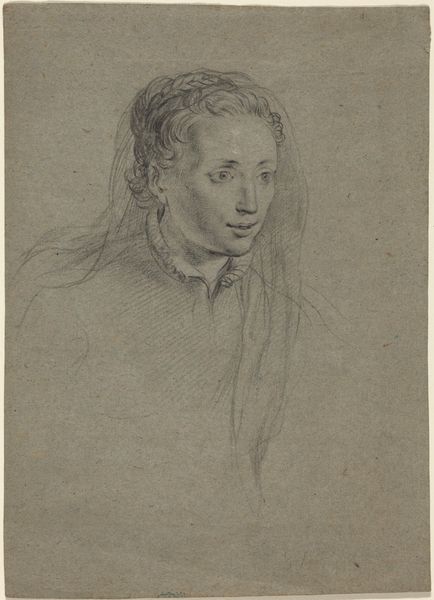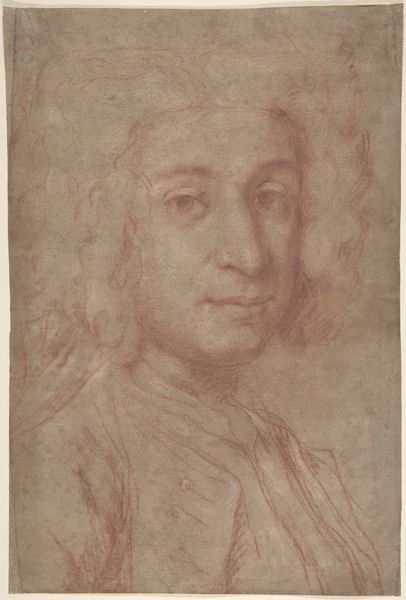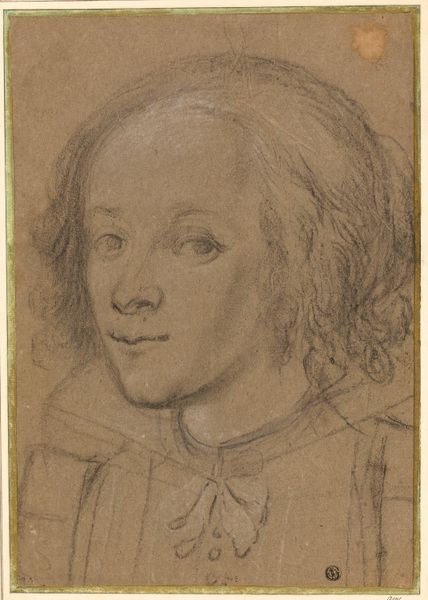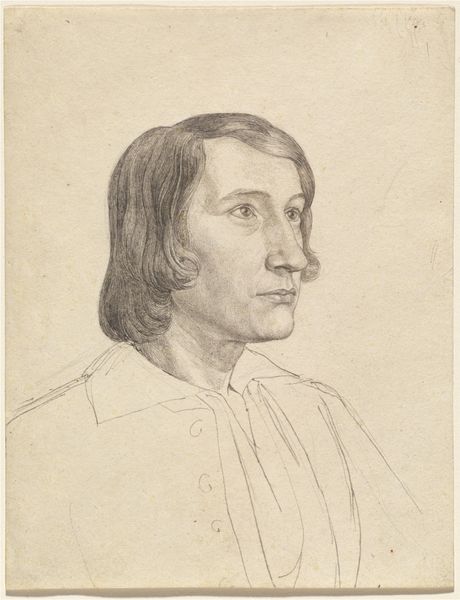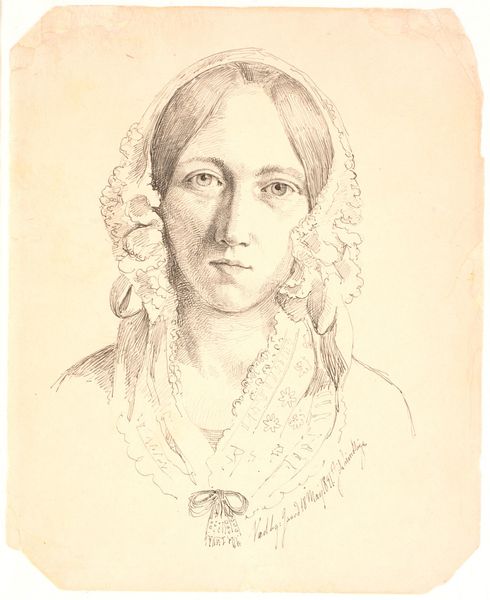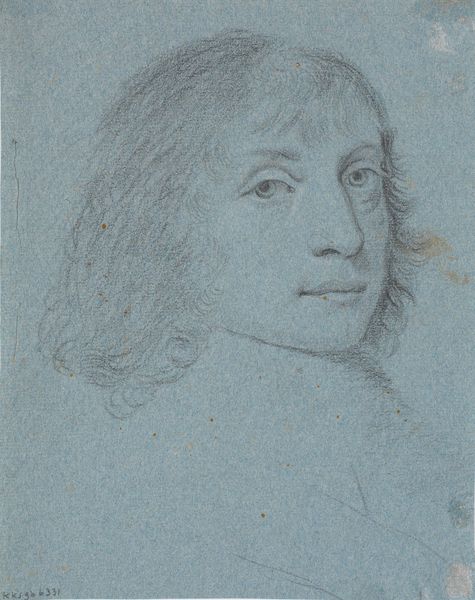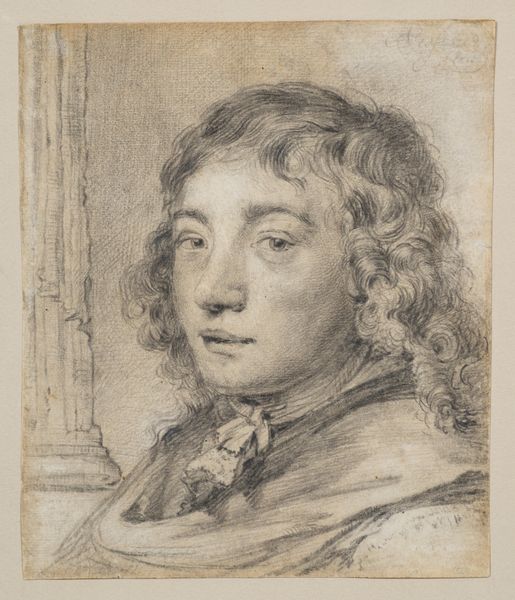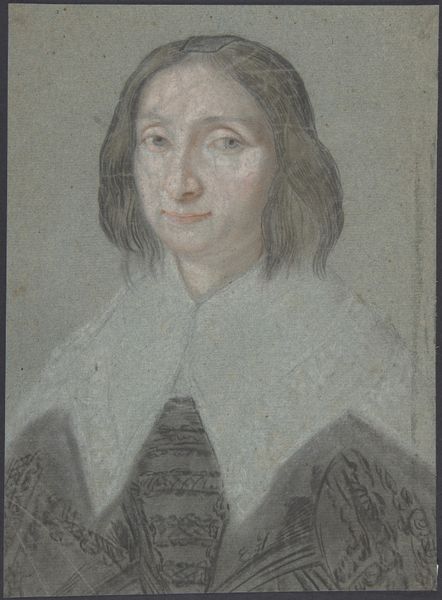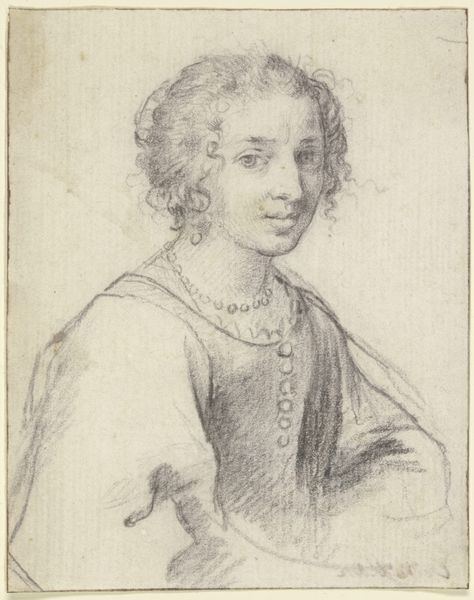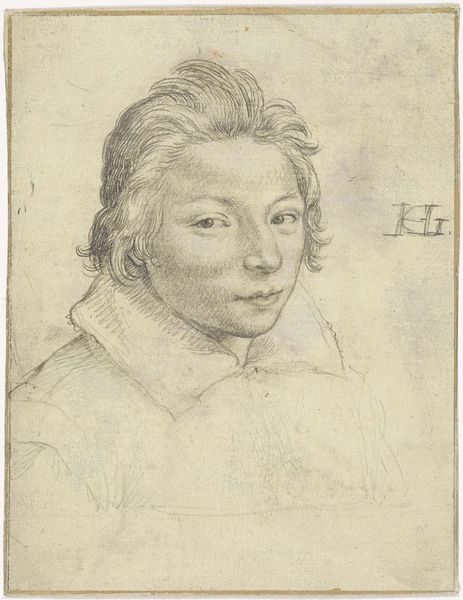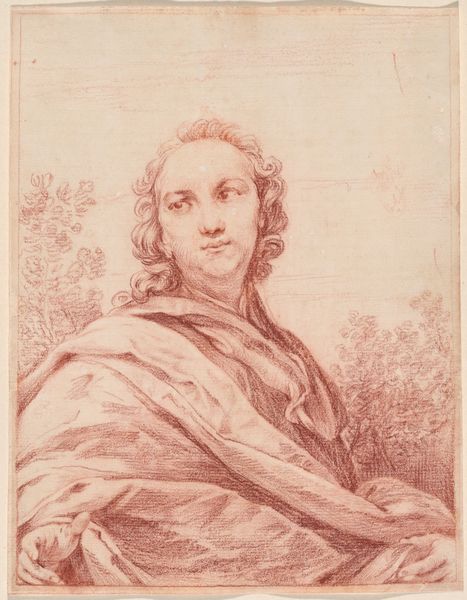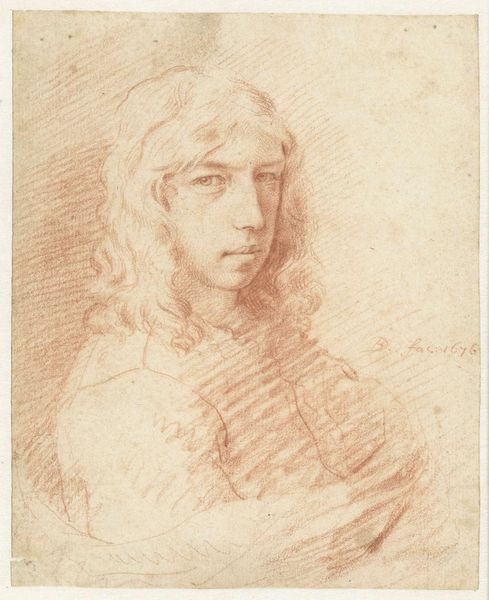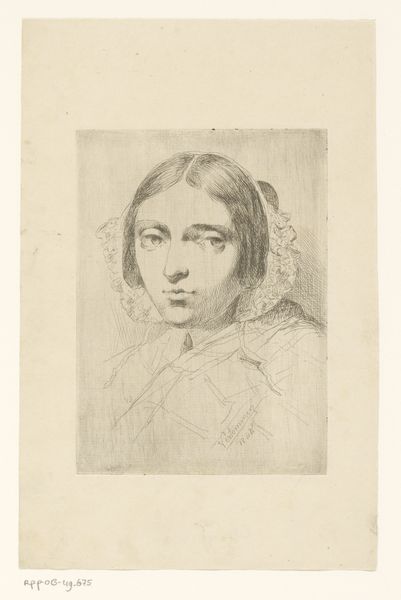
drawing, print, paper, pencil
#
portrait
#
drawing
#
baroque
# print
#
paper
#
pencil
Dimensions: 8 11/16 x 7 11/16 in. (22 x 19.6 cm.)
Copyright: Public Domain
Curator: Philippe de Champaigne, a leading figure in the French Baroque, rendered this arresting "Portrait of Charlotte Duchesne" around 1628. It's a pencil drawing on paper, currently residing here at The Met. Editor: My immediate impression is one of quiet strength. Her gaze is direct, but there's a softness too, almost melancholy, in the lines of the drawing. It feels intimate. Curator: The portrait exists as an exemplary demonstration of 17th century aristocratic culture in which we consider a subject’s character and status presented to the wider public via portraits of family members and the wealthy elite. It reveals Champaigne's engagement with the representation of nobility and identity. Editor: Exactly. It invites us to contemplate what it meant to be a woman, specifically, within that echelon. The restrained depiction of wealth—her modest yet fine clothing—contrasts with the elaborate display of many other Baroque portraits. It suggests perhaps a focus on inner qualities rather than external adornment, though let's be real, those qualities are defined by and confined within a system of class and power. Curator: But it is also crucial to consider the historical contexts that produced it. Think about the social constraints placed upon women during this era. The drawing encapsulates their limited agency, and in tandem showcases aristocratic values, simultaneously critiquing norms of that society but also reaffirming its basic tenets. Editor: Yes, and considering Champaigne’s later association with the Jansenist movement, known for its emphasis on inner piety, the quiet introspection in Charlotte’s gaze seems all the more compelling. It begs us to examine it beyond merely aesthetic achievement. We can question whose story gets told, and how, and perhaps even what remains untold. Curator: Indeed. It serves as an intriguing artifact for considering intersectional history, as the pencil and paper give material form to her social place. Editor: Ultimately, the portrait embodies not only an artistic moment, but a reflection of historical social dynamics as it reflects systems of social identity, gender, and representation that speak to enduring questions in our contemporary world. Curator: Thank you, what you’ve identified gives rise to interesting lines of enquiry and opens new understandings of what this artwork communicates.
Comments
No comments
Be the first to comment and join the conversation on the ultimate creative platform.
